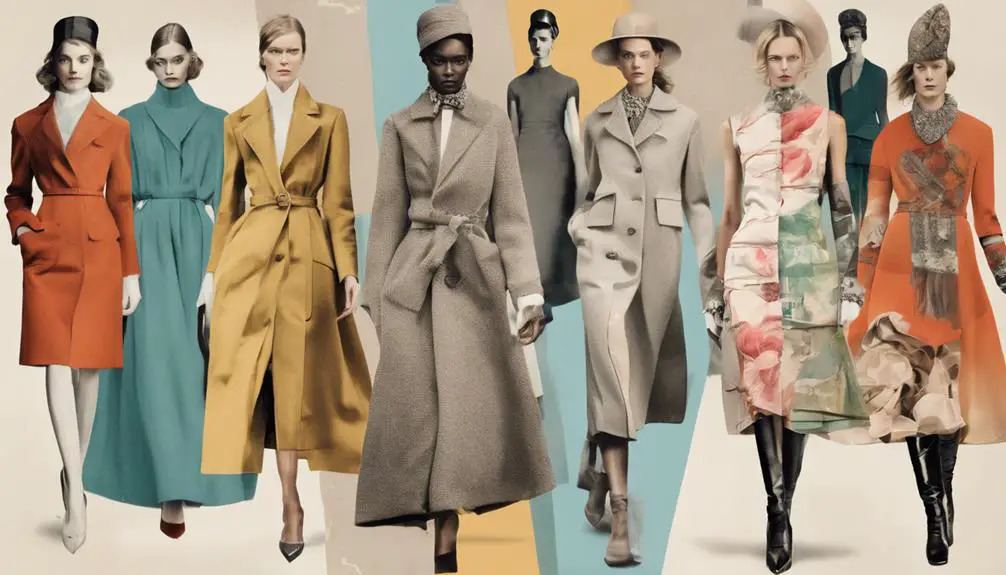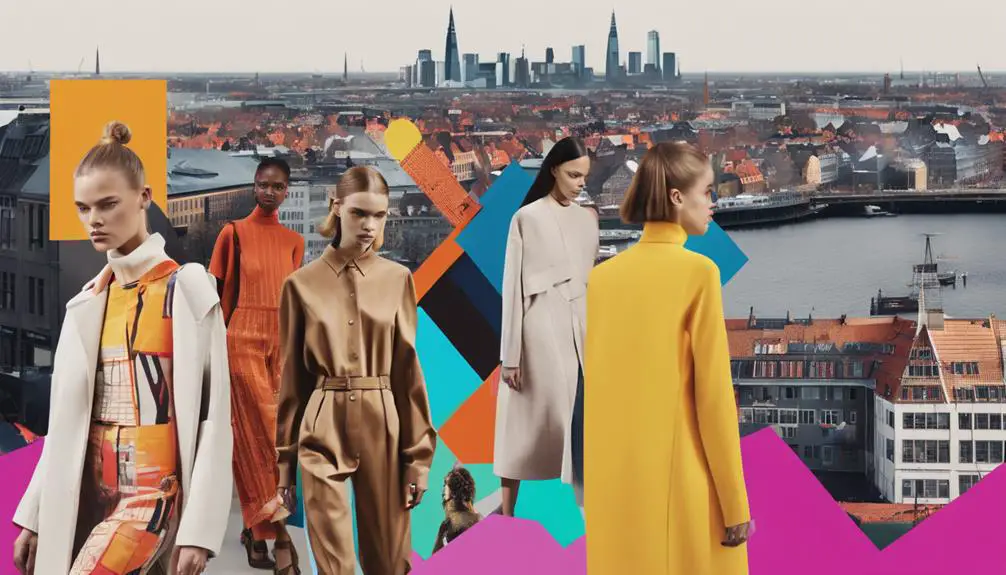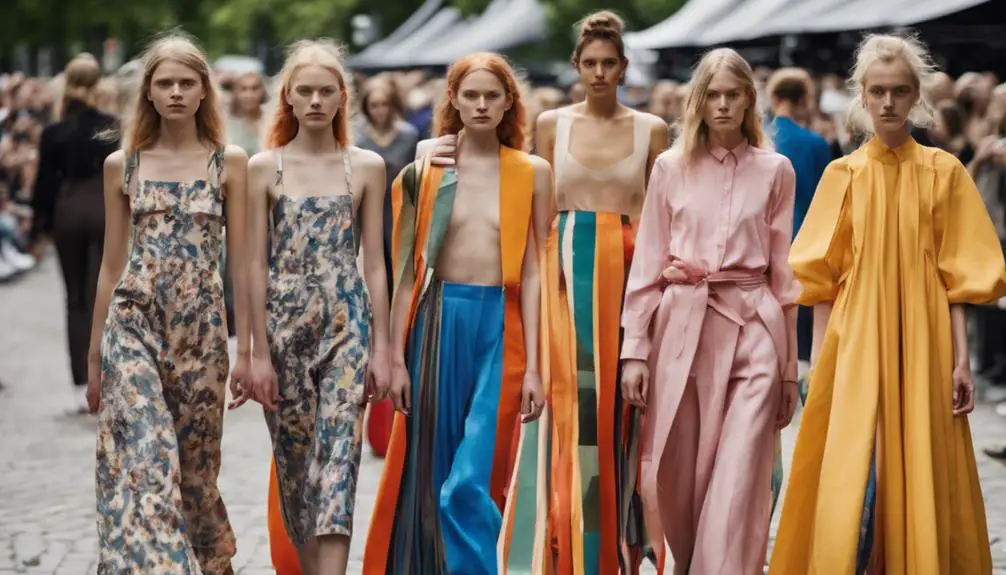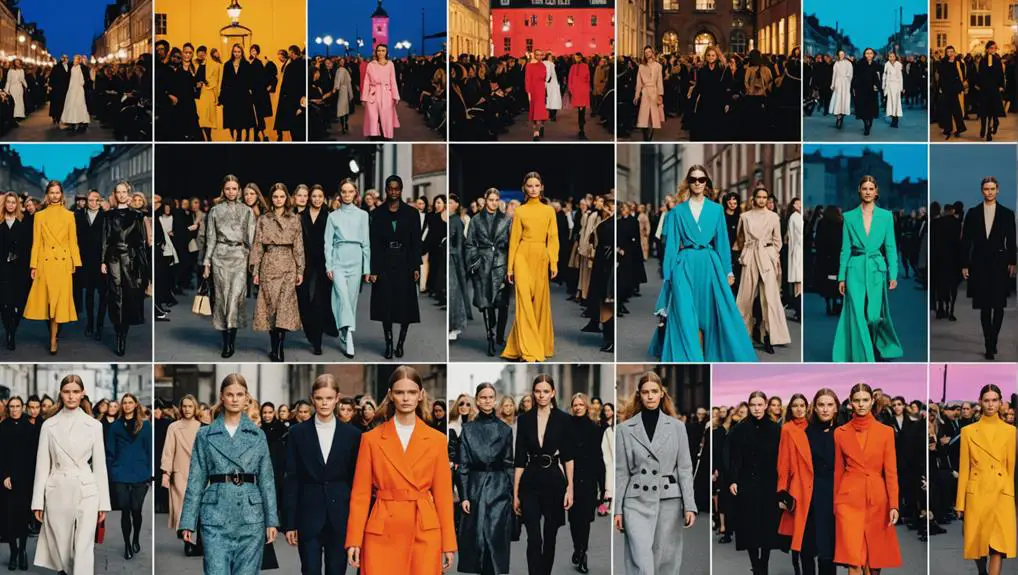Picture the vibrant streets of Copenhagen, where creativity and sustainability intertwine, shaping the future of fashion. You might wonder how a relatively young event has transformed into one of the largest fashion weeks in Northern Europe, influencing global trends along the way. The journey is marked by significant milestones and innovative initiatives that challenge the status quo. As you explore this evolution, you'll uncover the intriguing roles of emerging designers and the community's engagement that have redefined the landscape of fashion. What lies behind these changes, and how do they impact the industry at large?
Historical Milestones of CPHFW

Copenhagen Fashion Week (CPHFW) has marked several key milestones since its establishment in 2006. You might not know this, but it all started from a merger of two fashion weeks that date back to the 1950s! Talk about a rich history! From the get-go, CPHFW aimed to elevate Danish fashion globally. And guess what? It's now the largest fashion week in Northern Europe. How cool is that?
In just a few years, CPHFW gained recognition as the fifth global fashion week. That means it's not just important locally; it attracts international press and buyers like a magnet. You can imagine the buzz! Over the years, CPHFW has embraced cultural influences and fashion collaborations, showcasing unique styles that blend different backgrounds and ideas. This melting pot of creativity keeps things fresh and exciting.
A significant moment came in 2018 when an advisory board focused on sustainability was formed. They didn't just talk the talk; they implemented a three-year Sustainability Action Plan in 2020. By February 2023, they raised the bar even higher with mandatory sustainability criteria for brands. Now, at least 50% of collections must use recycled or upcycled materials. Isn't that a step in the right direction?
Key Sustainability Initiatives
Sustainability is at the forefront of Copenhagen Fashion Week's mission, with key initiatives that set a standard for the industry. Since February 2023, CPHFW has made it clear: brands must guarantee at least 50% of their collections are made from recycled materials or upcycled designs. That's a big deal, right? It pushes designers to think creatively about what they use, turning waste into something fabulous!
In January 2020, they launched a three-year Sustainability Action Plan, complete with 18 minimum standards for brands. This isn't just a checklist; it's a roadmap to a greener future. CPHFW encourages brands to chat about effective sustainability measures, creating a space for open dialogue. Transparency in supply chains? Yes, please! That's how we build trust and make sure everyone plays fair.
You'll even see the Royal Danish Academy showcasing graduate designs at the event, highlighting innovative practices in sustainable fashion. How cool is that? It's like a sneak peek into the future of fashion, where creativity and eco-friendliness go hand in hand.
Cecilie Thorsmark, the CEO, is a big advocate for adopting sustainability standards across the fashion world. She's positioning CPHFW as a global model for eco-friendly initiatives. Isn't it inspiring to think that your favorite brands might one day follow in these footsteps? So, keep an eye on Copenhagen Fashion Week. They're not just setting trends; they're setting a green example for us all!
Funding and Organizational Structure

The funding and organizational structure of Copenhagen Fashion Week plays a vital role in its ability to champion sustainability and innovation. You'll find that this event isn't just about the glitz and glam; it's a well-oiled machine powered by smart funding. With 15% coming from public funding and a whopping 85% from commercial partnerships, it's clear that teamwork makes the dream work here! The Danish Ministry of Industry, Business and Financial Affairs is a key player, ensuring financial support for these creative initiatives.
Here's a quick look at how the funding flows:
- Public funding: Primarily from the Danish government, which believes in the event's mission.
- Commercial partnerships: Major players like Zalando step up, aligning their brand with sustainability.
- Ethical charter: This guides collaborations, keeping everything transparent and above board.
- Local designer support: The structure promotes and nurtures homegrown talent.
- Collaboration focus: It emphasizes teamwork with industry stakeholders for sustainable practices.
Impact on Global Fashion Trends
How does an event in a small Scandinavian capital manage to reshape global fashion trends? Well, search no further than Copenhagen Fashion Week! Since February 2023, this vibrant event has been leading the charge in sustainability by requiring brands to use at least 50% recycled or upcycled materials in their collections. Talk about setting a standard! By doing this, CPHFW doesn't just change how we think about fashion; it pushes other fashion weeks around the world to adopt similar eco-friendly practices. The evolution of branding and logo design in fashion parallels the innovative spirit of CPHFW, where vintage Nike clothing has surged in popularity, showcasing quality and timeless design.
With its spotlight on sustainable materials, CPHFW inspires designers from every corner of the globe to rethink their choices. Imagine the creativity blooming from brands experimenting with materials like Renewcell's Circulose®. It's pretty exciting, right? Through platforms like NEWTALENT, the fashion week highlights emerging Nordic brands, showcasing innovative solutions that resonate far beyond Denmark.
Copenhagen's focus on climate discussions and sustainability initiatives doesn't just create buzz—it sparks important conversations about environmental responsibility in the fashion industry. You know what that means? Brands are feeling the pressure to prioritize sustainability in their business models.
Emerging Designers and Community Engagement

Copenhagen Fashion Week (CPHFW) shines a spotlight on emerging Nordic designers, offering them a unique platform through its NEWTALENT initiative. This is where you'll discover innovative, made-to-order collections from brands like P.L.N. and Vain. Isn't it exciting to see fresh talent shaking up the fashion scene?
Community engagement is a big deal at CPHFW. They really focus on creating an inclusive environment where everyone's voice matters. Here are some ways they make it happen:
- Open dialogue among industry members, promoting respectful conversations.
- Unique venues, like the luxurious Hotel D'Angleterre, showcasing stunning designs.
- Networking opportunities for buyers, stylists, and journalists during dinners and discussions.
- Focus on sustainability, inspiring global councils to adopt eco-friendly measures.
- Support for emerging talent, helping them connect with experienced professionals.
You'll feel the energy as designers share their visions and collaborate on projects. This isn't just about clothes; it's about building a community. When you see emerging designers getting support and recognition, it's like watching a flower bloom.
Frequently Asked Questions
How Copenhagen Became the World's Most Sustainable Fashion Week?
Copenhagen became the world's most sustainable fashion week by implementing eco-friendly initiatives and sustainable practices. You'll find brands committed to transparency and circular economies, inspiring global change in the fashion industry towards sustainability.
When Did Copenhagen Fashion Week Start?
Copenhagen Fashion Week started in 2006, marking a significant moment in fashion history. Its event origins stem from the merger of Dansk Modeuge and Dansk Herremodeuge, bringing Danish designers into the global spotlight.
What Is the Copenhagen Fashion Week Action Plan?
The Copenhagen Fashion Week Action Plan focuses on sustainable initiatives and industry collaboration. It sets mandatory standards for brands, ensuring they use recycled materials and commit to transparency, fostering a responsible and accountable fashion landscape.
Is Copenhagen Fashion Week Good?
You'll find Copenhagen Fashion Week's sustainability initiatives impressive, as they set a strong industry impact example. By prioritizing eco-friendly practices, it encourages other events to follow suit, making fashion more responsible and inclusive for everyone involved.




